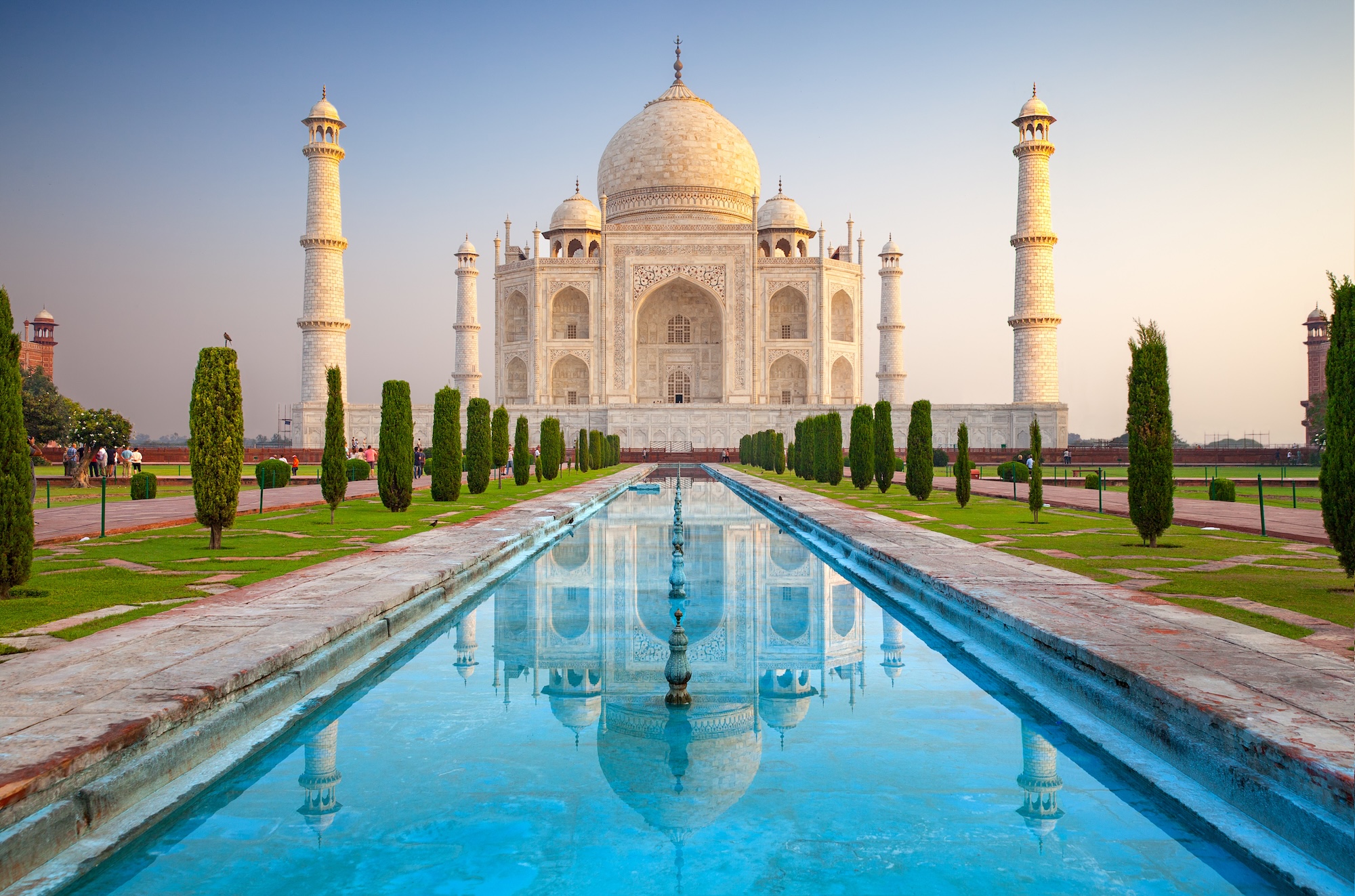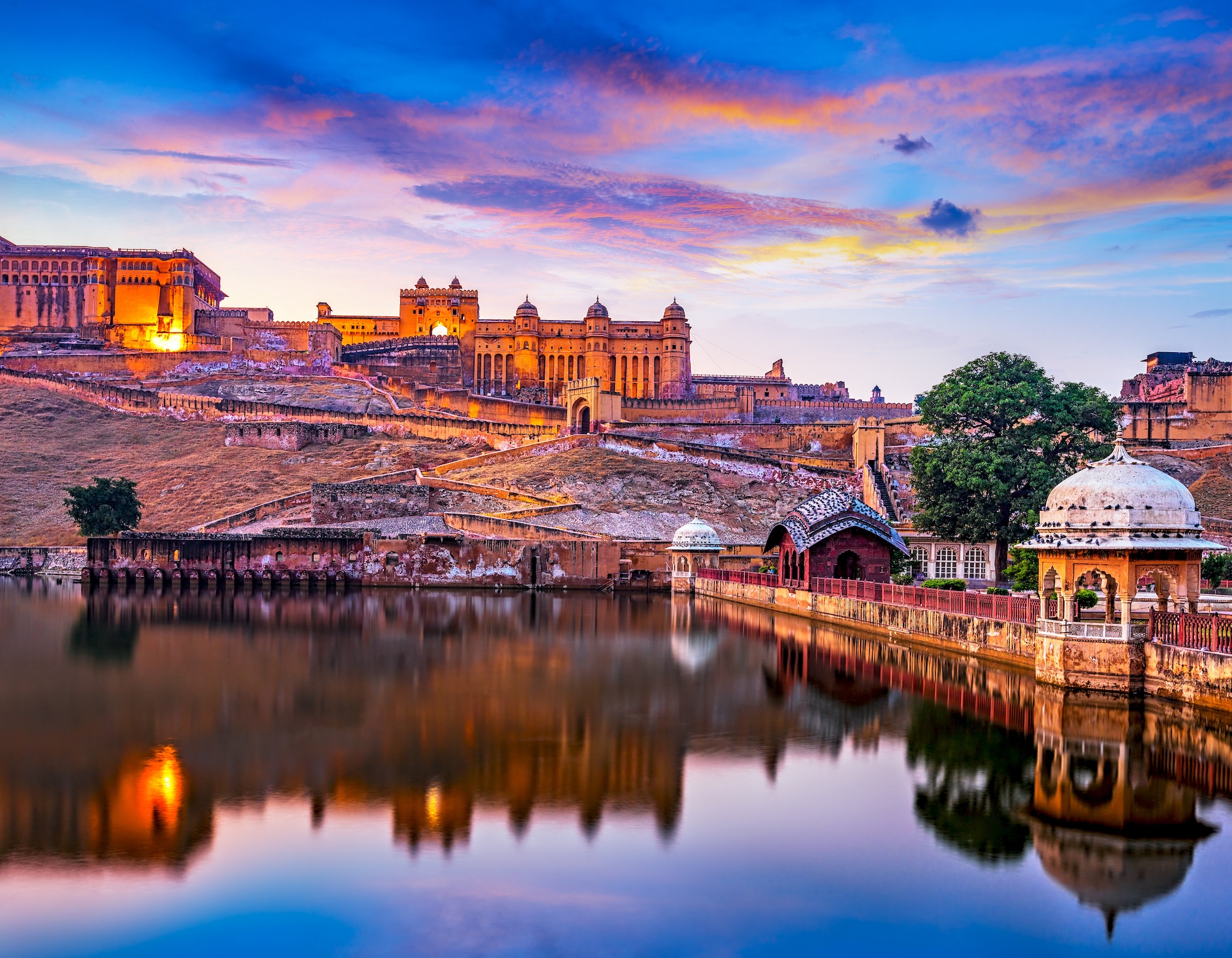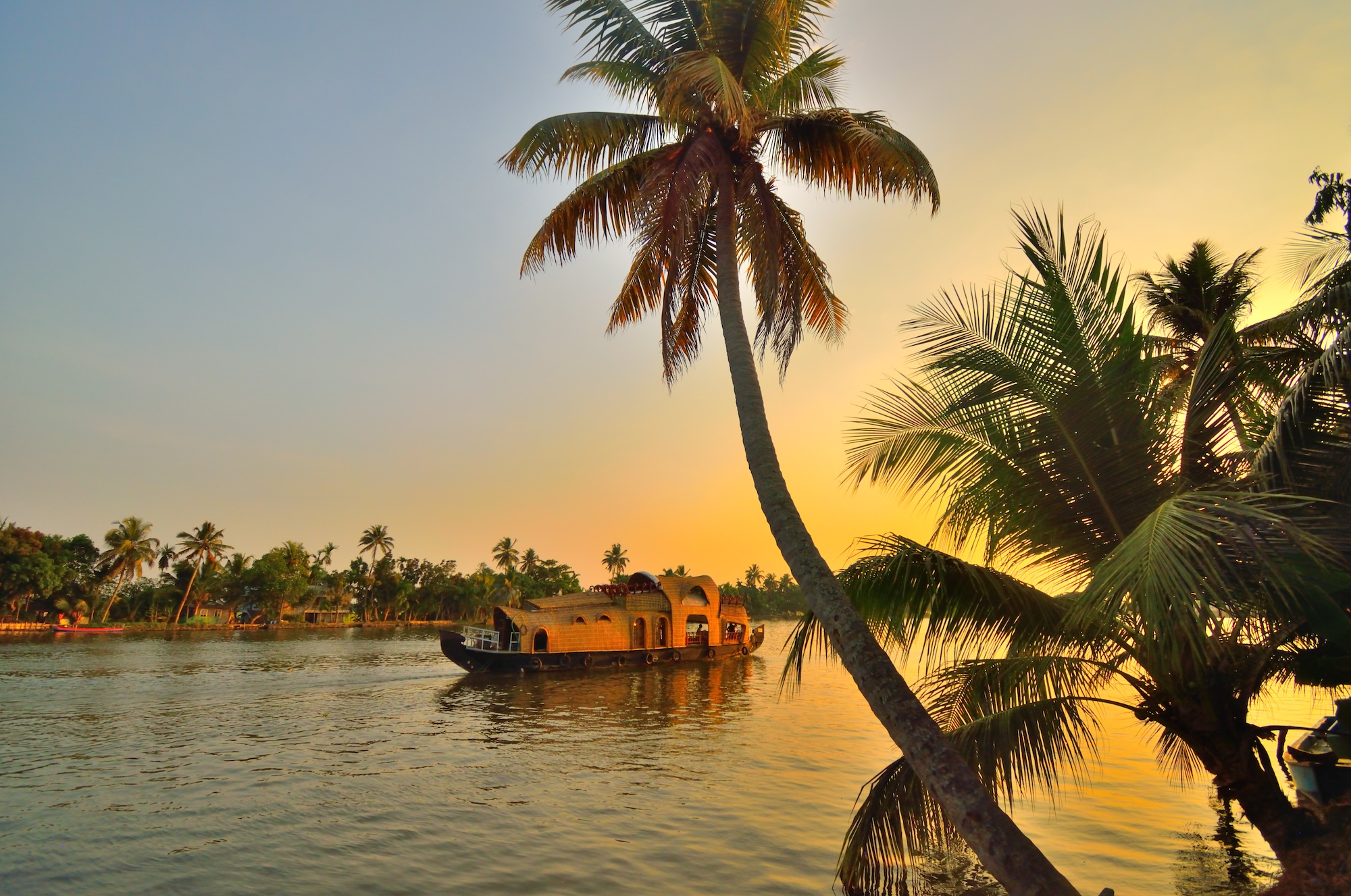
World Travel Tips
What Should You Do in India?
India, a land of diverse cultures, traditions, and landscapes, offers a multitude of travel experiences for every kind of tourist. From ancient monuments to serene natural beauty, there’s something to suit every traveler’s interest. Here are the top 10 must-visit attractions in India:
1. The Taj Mahal

Located in Agra, the Taj Mahal is one of the world’s most famous landmarks. This white marble mausoleum, built by Emperor Shah Jahan in memory of his beloved wife Mumtaz Mahal, is an architectural marvel with intricate carvings, reflective pools, and lush gardens surrounding it.
Why visit?
The Taj Mahal is an enduring symbol of love and is universally recognized as one of the Seven Wonders of the World. The grandeur and delicate craftsmanship of the monument will leave visitors awe-struck, making it an unforgettable experience.
2. Jaipur’s Amber Fort

Perched on a hilltop overlooking the Pink City, Amber Fort is a sprawling fort complex that blends Hindu and Mughal architectural styles. Visitors can explore its intricate palace interiors, courtyards, and take an elephant ride to the top for a royal experience.
Why visit?
Amber Fort is not only historically significant but offers breathtaking views of the surrounding landscapes. Its blend of history, culture, and beauty makes it a top destination in India’s royal Rajasthan state.
3. The Backwaters of Kerala

The backwaters of Kerala are a network of serene lagoons, rivers, and canals that wind through lush landscapes, often viewed from traditional houseboats. The region is also home to abundant wildlife, vibrant villages, and tranquil landscapes.
Why visit?
A houseboat cruise in Kerala is an unparalleled way to experience the calm and unspoiled natural beauty of India. It’s perfect for those seeking relaxation amidst stunning surroundings, away from the hustle and bustle of city life.
4. Qutub Minar
Standing tall in Delhi, the Qutub Minar is the tallest brick minaret in the world and a UNESCO World Heritage site. Built in the 12th century, it is surrounded by ruins of ancient structures, providing a glimpse into India’s medieval history.
Why visit?
Qutub Minar is an architectural and historical wonder, offering visitors a chance to explore one of Delhi’s most iconic landmarks. The intricate carvings and towering height of the minaret make it a remarkable sight.
5. The Golden Temple (Harmandir Sahib)
Located in Amritsar, the Golden Temple is the holiest shrine of Sikhism. Its golden dome and reflective pool create a tranquil atmosphere, while visitors can also experience the Sikh tradition of “Langar” (free community kitchen).
Why visit?
The Golden Temple is not just a religious site but a peaceful retreat that radiates spiritual significance. Its beautiful architecture, along with the serene environment, makes it a deeply moving experience for all visitors, regardless of their faith.
6. Goa Beaches
Goa is famous for its stunning beaches, such as Baga, Anjuna, and Palolem. With golden sands, crystal-clear waters, and lively beach parties, Goa offers the perfect blend of relaxation and vibrant nightlife.
Why visit?
Goa’s beaches are ideal for both sun-seekers and adventure lovers. Whether you’re looking to relax by the ocean or engage in water sports like parasailing and surfing, Goa’s coastline provides a little bit of everything.
7. The Red Fort
Another monumental landmark in Delhi, the Red Fort (Lal Qila) is a symbol of India’s rich Mughal history. This massive red sandstone structure was the residence of Mughal emperors and hosts a series of fascinating museums and courtyards.
Why visit?
The Red Fort offers visitors a glimpse into India’s imperial past. The architecture is both imposing and beautiful, and its historical significance, including its role in India’s independence movement, makes it a must-see.
8. Varanasi (Kashi)
Situated on the banks of the sacred River Ganges, Varanasi is one of the oldest continuously inhabited cities in the world. Pilgrims flock here to bathe in the Ganges and perform ritualistic ceremonies at the ghats.
Why visit?
Varanasi is a profound spiritual experience that allows travelers to witness the intersection of daily life and centuries-old religious practices. The evening Aarti ceremony on the ghats is a mesmerizing sight not to be missed.
9. The Ajanta and Ellora Caves
Located in Maharashtra, the Ajanta and Ellora Caves are complex networks of ancient rock-cut caves adorned with stunning sculptures and paintings. The Ellora Caves are especially known for the Kailasa temple, carved out of a single rock.
Why visit?
These UNESCO World Heritage sites are remarkable for their intricate art and architecture, offering a unique glimpse into India’s ancient religious and cultural history. The caves represent an incredible feat of human creativity and craftsmanship.
10. Rishikesh and Haridwar
Rishikesh, the “Yoga Capital of the World,” and nearby Haridwar are important spiritual hubs situated along the Ganges River. Rishikesh offers yoga retreats, adventure sports like white-water rafting, and serene temples, while Haridwar is famous for its spiritual rituals.
Why visit?
Rishikesh and Haridwar offer a blend of spirituality, nature, and adventure. Whether you’re looking for peace and meditation or outdoor thrills, these cities are gateways to both enlightenment and excitement.
Final Thoughts
These attractions are only the tip of the iceberg when it comes to exploring India’s rich history, diverse culture, and natural beauty. Each destination offers something unique, making India a country that never fails to fascinate travelers.
Seasonal Recommendations
❄️ Winter (December-February): Winter is the most popular time to visit India, especially for international travelers. With temperatures ranging from 10°C to 25°C (50°F to 77°F) in most parts of the country, it’s the perfect season for sightseeing and cultural exploration without the discomfort of intense heat. From exploring the iconic Taj Mahal in crisp morning light to enjoying spiritual rituals along the Ganges in Varanasi, the cooler weather makes it easy to travel across regions. Destinations like Rajasthan and Delhi are especially pleasant, while the beaches of Goa offer a warm escape with lively holiday vibes.
? Spring (March-May): Spring in India bridges the gap between the mild winter and the intense summer heat, with temperatures climbing from 20°C to 35°C (68°F to 95°F). Early spring is a comfortable time for outdoor activities, including river rafting in Rishikesh or exploring the forts and palaces of Jaipur. As the season progresses, the heat begins to build—particularly in central and northern regions—but spring is still a vibrant time to visit, especially during festivals like Holi. The landscape begins to shift toward golden tones, and there’s a sense of energy in the air as the country prepares for summer.
? Autumn (September-November): Autumn in India offers a refreshing return to cooler temperatures after the monsoon season, ranging from 20°C to 30°C (68°F to 86°F) depending on the region. The skies clear, the air feels fresh, and cultural life picks up with major festivals like Diwali and Navratri. This is a fantastic time to explore ancient wonders like the Ajanta and Ellora Caves or the colonial streets of Delhi near the Red Fort. With lush landscapes still lingering from the rains and a festive mood across the country, autumn offers a balanced and scenic time to travel.
☀️ Summer (June-August): Summer in India can be intense, with daytime temperatures often reaching 35°C to 45°C (95°F to 113°F) in the plains. It’s the least popular season for most travelers, but it does have its draws—especially if you head to the Himalayas or coastal regions. The arrival of the monsoon rains brings relief in July and August, transforming regions like Kerala’s backwaters into lush, serene escapes. Pilgrimage towns like Haridwar and Rishikesh also take on a misty, peaceful beauty. While city travel can be hot and humid, those seeking quieter experiences and green landscapes may find summer surprisingly rewarding.
Tips for Your Visit
1. Getting Around
- Use Local Transport: India offers a variety of transport options, including rickshaws, auto-rickshaws, buses, and trains. For short distances, auto-rickshaws and cycle rickshaws are popular, but agree on the fare beforehand or use a meter.
- Train Travel: The Indian railway system is vast and efficient, but trains can be crowded. Book your tickets in advance, especially for long-distance travel, and opt for higher classes like AC for a more comfortable ride.
- Apps for Convenience: Use apps like Ola and Uber for taxis or rideshares in major cities. They are often more reliable than hailing a taxi on the street.
2. Local Cuisine
- Spice Levels: Indian food is famous for its bold flavors and spice. If you’re not used to spicy food, start with milder options and ask for less spice when ordering.
- Street Food: Street food is a must-try for food lovers, but stick to busy vendors with a high turnover to ensure freshness. Opt for freshly prepared items like chaat or samosas, but avoid raw salads or unpeeled fruits.
- Drink Bottled Water: Avoid drinking tap water. Always opt for bottled water (make sure the seal is intact) and use it for brushing your teeth as well.
3. Language
- Hindi and English: While Hindi is the most widely spoken language, English is commonly used in major cities, tourist areas, and business. Learning a few basic Hindi or regional phrases like “Namaste” (hello) and “Shukriya” (thank you) can go a long way in connecting with locals.
- Regional Languages: India has hundreds of languages. Depending on where you’re traveling, learning a few words in the local language (e.g., Tamil in the South or Bengali in West Bengal) will help make interactions smoother.
4. Safety
- Keep Your Belongings Close: Petty theft can be a problem in busy areas, so always keep your valuables, like your passport and money, in a secure, zipped bag.
- Stay Aware of Your Surroundings: Be cautious, especially at night and in unfamiliar areas. Stick to well-lit and populated areas and avoid deserted streets.
- Respect Local Customs: India has a rich cultural heritage, so be mindful of local customs. Dress modestly, particularly when visiting religious sites, and always ask for permission before taking photos of people, especially in rural areas.
These tips will help ensure a smoother, safer, and more enjoyable experience as you explore the incredible diversity of India!
The 3 Most Popular Cities
India is a land of vibrant cultures and rich history, and its cities offer a fascinating blend of tradition and modernity. Whether you’re exploring ancient monuments, experiencing local markets, or soaking in the vibrant energy, India’s cities have something for everyone. From the bustling streets of Mumbai to the royal charm of Jaipur, and the political heart of New Delhi, these cities are top destinations for any traveler wanting to experience the diverse essence of India.
1. New Delhi
Why It’s Popular:
New Delhi, India’s capital, is the pulse of the nation, offering a perfect blend of history, politics, culture, and modernity. The city is home to both ancient monuments and contemporary landmarks, making it a must-visit for anyone interested in Indian history and diverse culture. With its vibrant markets, beautiful parks, and rich heritage, New Delhi serves as the gateway for travelers exploring northern India.
Must-See Attractions:
- Red Fort (Lal Qila)
- India Gate
- Qutub Minar
- Humayun’s Tomb
- Lotus Temple
What to Do:
Explore historical sites like the Red Fort, shop in bustling markets like Chandni Chowk, visit the impressive India Gate, and unwind at tranquil spots like the Lotus Temple. Don’t miss the delicious street food or try a rickshaw ride in Old Delhi for an authentic experience.
2. Mumbai
Why It’s Popular:
Mumbai, India’s financial and entertainment capital, is a melting pot of cultures, industries, and lifestyles. Known for its glamorous Bollywood film industry, iconic landmarks, and bustling streets, Mumbai offers an exciting blend of traditional and modern life. It is a city of dreams and opportunities, drawing visitors with its vibrant energy and cosmopolitan atmosphere.
Must-See Attractions:
- Gateway of India
- Marine Drive
- Elephanta Caves
- Chhatrapati Shivaji Maharaj Terminus (CST)
- Colaba Causeway Market
What to Do:
Take a boat ride to the Elephanta Caves, shop for souvenirs at Colaba Causeway, visit the impressive Gateway of India, and take a stroll along Marine Drive, especially at sunset. For a more local experience, visit Dharavi for a guided tour of one of the world’s largest slums and its thriving industries.
3. Jaipur
Why It’s Popular:
Known as the “Pink City,” Jaipur is the capital of Rajasthan and a stunning example of royal history and architectural grandeur. It is famous for its majestic forts, palaces, and vibrant bazaars. With a mix of ancient charm and modern amenities, Jaipur offers a deep dive into India’s royal past and is part of the popular Golden Triangle tourist circuit (Delhi, Agra, and Jaipur).
Must-See Attractions:
- Amber Fort
- City Palace
- Hawa Mahal (Palace of Winds)
- Jantar Mantar
- Nahargarh Fort
What to Do:
Explore the architectural beauty of Amber Fort, stroll through the opulent City Palace, take in the breathtaking view from Nahargarh Fort, and shop for traditional Rajasthani handicrafts in the bustling markets. Jaipur is also known for its royal cuisine, so make sure to try some local dishes like dal baati churma and laal maas.
10 Tips for Dining in India
India’s food scene is as diverse as its culture, with flavors, spices, and dishes that vary dramatically from region to region. From street food to fine dining, eating in India is an experience that goes beyond just satisfying your hunger. However, there are a few things to keep in mind to ensure you have a safe and enjoyable dining experience. Here’s your guide to navigating the food scene in India with confidence!
1. Embrace the Spice, But Know Your Limits
Indian food is renowned for its bold, rich, and spicy flavors. Whether it’s a plate of biryani in Hyderabad or a curry in Delhi, expect a strong use of spices like cumin, coriander, garam masala, and chili. If you’re new to spicy food, start slow.
Tip: Don’t be shy to ask for your dish to be prepared “mild” if you’re not used to the heat. Most restaurants are happy to adjust spice levels, especially in tourist areas.
2. Street Food is a Must, But Choose Wisely
India’s street food scene is legendary—think samosas, chaat, vada pav, and dosas. It’s an essential part of the local experience, but caution is key.
Tip: Stick to busy vendors with high turnover; this ensures freshness. Look for places with a steady stream of customers, and if the food is cooked right in front of you, it’s usually safer to eat. Avoid raw salads and unpeeled fruits from street vendors to minimize the risk of contamination.
3. Tap Water: Always Opt for Bottled Water
While tap water in India is not safe to drink for most visitors, bottled water is widely available. Stick to sealed bottles and avoid ice in drinks, as it may be made from untreated water.
Tip: Always check the seal of bottled water to ensure it hasn’t been tampered with. For extra precaution, avoid brushing your teeth with tap water.
4. Understand Local Dining Etiquette
In many parts of India, eating with your hands is not only accepted but is a traditional way of eating, especially in the south. If you’re eating with your hands, use only your right hand (the left hand is considered impolite for eating in Indian culture).
Tip: If you’re dining in a more formal setting or if you’re unsure, it’s always safe to ask for cutlery, though most local eateries will serve your meal with your hands in mind. When in doubt, observe locals and follow their lead.
5. Be Prepared for Long Meals
Meals in India, especially in local or family-owned restaurants, tend to be leisurely affairs. It’s common to spend a lot of time chatting and enjoying the food, so don’t rush.
Tip: Don’t expect a quick meal, especially in smaller or more traditional eateries. Relax and enjoy the experience of dining, which is often about more than just the food—it’s about connection and conversation.
6. Don’t Skip Breakfast!
In India, breakfast is often hearty and diverse. Depending on the region, you might have a plate of parathas (flatbreads), idli (steamed rice cakes), or a bowl of poha (flattened rice). Street vendors and small eateries serve up fresh, hot breakfast items, so take advantage of this early meal.
Tip: If you’re staying at a hotel, many offer a complimentary breakfast with local dishes, so it’s worth giving it a try. If you’re out exploring, look for a local dhaba (roadside restaurant) serving traditional breakfast dishes.
7. Cultural Sensitivity Around Vegetarianism
India has a large vegetarian population, and many restaurants focus on vegetarian dishes or offer them as the primary options. In fact, it’s common for Indian menus to be divided into vegetarian and non-vegetarian sections. If you’re a meat-eater, don’t worry—you’ll find plenty of options, but it’s always good to be aware of local preferences.
Tip: If you’re in more rural or religious areas (like Gujarat or parts of Rajasthan), expect a greater emphasis on vegetarian food. If you’re craving meat, make sure to double-check the menu, as some places may be entirely vegetarian.
8. Try Regional Specialties
India’s food is incredibly diverse, with each state offering its own unique cuisine. For example, if you’re in the south, try a traditional dosa (crispy rice crepes) and sambar (spicy lentil soup). In the north, enjoy butter chicken or a plate of tandoori meats. Each region brings its own twists to the country’s culinary landscape, so don’t miss out on regional specialties.
Tip: Ask the locals for recommendations. They’ll often guide you to the best places that serve authentic dishes from their region, whether it’s the street corner food stall or a famed restaurant.
9. Be Cautious with Dairy and Meat
While dairy is a huge part of Indian cuisine (especially yogurt, paneer, and milk-based sweets), the way dairy and meat are stored and prepared can vary. It’s best to eat at restaurants where you can see the food being prepared and where hygiene practices are visible.
Tip: If you’re sensitive to dairy or new to Indian cuisine, ease into it by starting with small portions of milder dishes like plain yogurt or vegetarian curries.
10. Tipping is Appreciated
Tipping in India is customary, though not always expected. In more formal restaurants, a tip of around 10% is standard if service charge isn’t already included. In smaller, local eateries, a small tip of 10-20 rupees is appreciated by the staff, especially if the service was good.
Tip: Always check your bill for any added service charges before tipping. If in doubt, rounding up the bill or leaving spare change works just fine.
Conclusion
Dining in India is a celebration of flavors, traditions, and regional specialties. While it can be an exciting culinary adventure, it’s important to be mindful of hygiene and local dining customs to have a safe and enjoyable experience. By following these tips, you’ll be able to navigate the diverse food scene with ease and indulge in the unforgettable tastes of India’s cuisine. Bon appétit—or as they say in India, “Khana Khayein!” (Enjoy your meal!)








